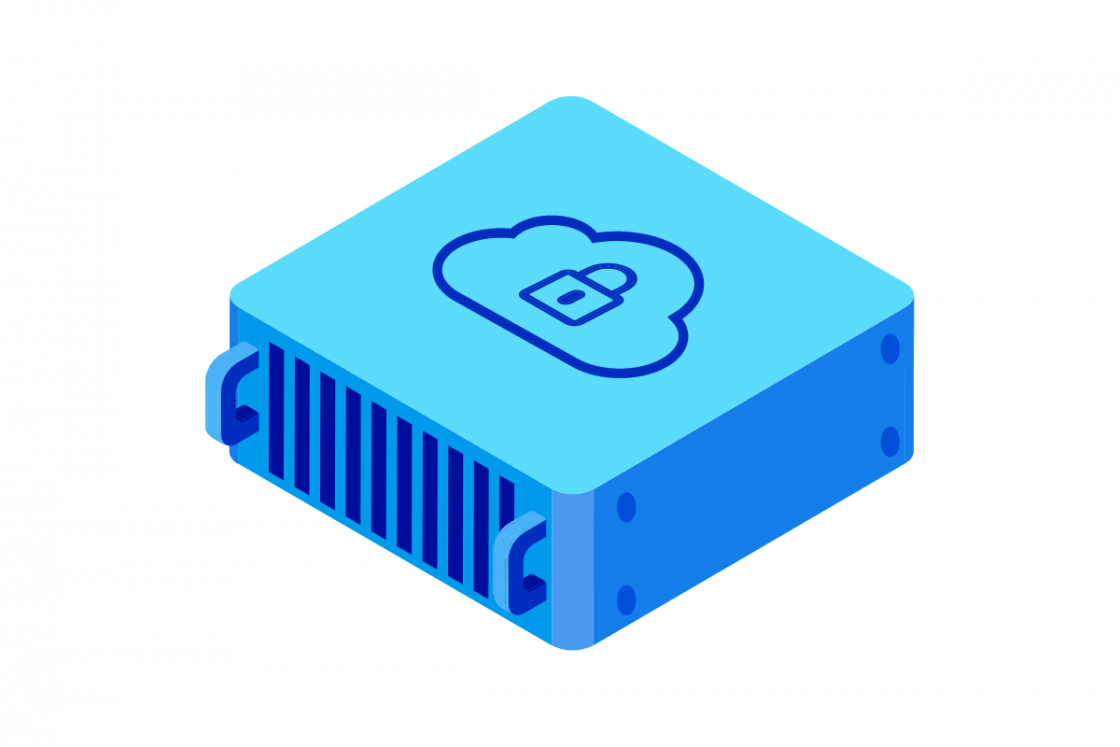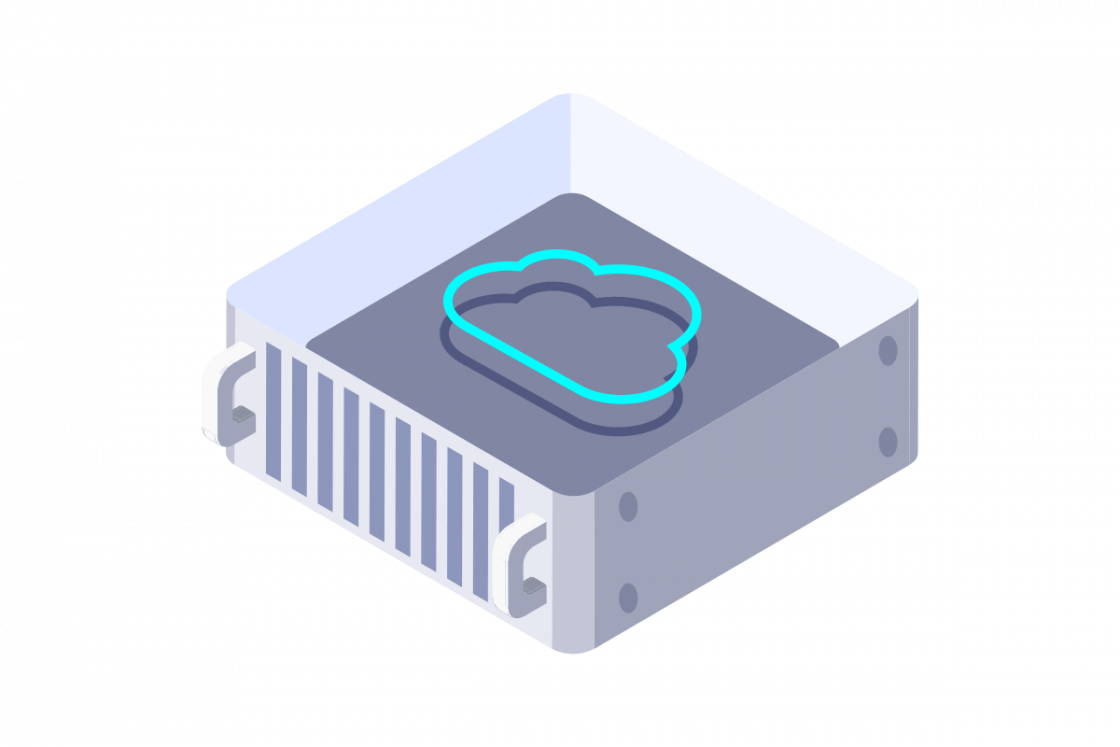What is an AI infrastructure?
Artificial intelligence (AI) infrastructure is the technological foundation for organizations to deploy, manage and optimize AI solutions. This on a large scale. Whether it’s massive data, complex models, or the need for high computing power via GPUs, every AI project requires a robust, suitable infrastructure.

How does the AI infrastructure work?
The AI infrastructure is a set of interconnected components that enables massive data processing, training of AI models and the deployment of high-performance applications. At the heart of this architecture, GPUs play a vital role in accelerating the calculations required for deep learning. High-performance storage is equally crucial, as it enables fast and smooth access to large data sets. The network ensures fast communication between different compute nodes and cloud environments, supporting flexible and scalable resource management. With these technological solutions, companies can set up reliable artificial intelligence services adapted to their business needs, while optimizing their digital infrastructure for collaborative and effective work.
The advantages of an AI infrastructure
Adopting a robust AI infrastructure offers many advantages for companies to harness the full potential of their data. Thanks to the integration of powerful GPUs, model processing times are significantly reduced, which accelerates the development of intelligent applications. Using the cloud allows for flexible resource management, while facilitating scaling up according to specific project needs. Secure, high-performance storage ensures the continuous availability of data, while an optimized network facilitates smooth exchanges between infrastructure components. These tailor-made solutions not only increase efficiency, but also boost team agility and the quality of services offered. By centralizing tools and facilitating collaboration, the AI infrastructure becomes a real driver of digital transformation and innovation in everyday work, and can be used for tasks like machine learning or deep learning .
An AI infrastructure unleashes the full potential of data warehouses by making it easier to access and analyze vast volumes of data. These warehouses centralize and organize information, enabling companies to make real-time, data-driven decisions. At the same time, high-performance computing is essential for processing this data quickly, especially when it comes to training complex AI models. By combining these two elements, such an infrastructure ensures effective resource management, through its GPU for artificial intelligence. It also enables faster analytics, while optimizing cost and performance for AI projects.
How to build an AI infrastructure
Building an effective AI infrastructure requires a structured approach, combining compute power, data accessibility, and scalability. It all starts with choosing the right environment — often cloud-based — for centralized, scalable resource management. The integration of high-performance GPUs is essential for accelerating the training of AI models, while fast and secure storage ensures the continuous availability of datasets. A reliable, high-speed network is also essential to ensure smooth communication between different components, especially in distributed architectures. Solutions must be designed to support businesses at every stage - from defining needs to deploying smart applications and services. This, while ensuring a stable, high-performance and secure working environment.
The key components of an AI infrastructure
A high-performance AI infrastructure is based on several essential technological components, which are perfectly integrated to meet the requirements of modern AI projects such as MLOps . GPUs are real compute engines that speed up the training of complex models, while significantly reducing processing times. High-speed storage, suitable for high volumes of data, is essential to enable fast and constant access to critical information. The network must be robust enough to support massive traffic flows between different elements, whether it’s a local deployment or a cloud-based one. This is complemented by automated management tools that orchestrate resources, applications, and security. Our solutions are designed to help businesses build a flexible, scalable, and optimized architecture that facilitates collaborative work and continuous innovation.
On-premises or cloud-based AI infrastructure: what to choose?
The choice between an on-premises or cloud AI infrastructure depends on the specific needs of each company. An on-premises solution offers complete control over data management, direct access to GPUs, and complete control over security and storage. It is particularly well-suited to industries that are subject to strict regulatory constraints, or sensitive data volumes. On the other hand, the cloud enables rapid scaling, flexibility, and immediate access to scalable computing resources to train complex models. The network then becomes a key link, ensuring the fluidity of exchanges between users, applications and remote platforms. Hybrid solutions combine the advantages of both approaches to offer personalized, agile and secure services, facilitating collaborative work and continuous innovation.
Best practices for implementing an AI infrastructure
The success of an AI infrastructure project depends on applying best practices from the earliest stages. It is essential to define clear objectives related to business needs in order to adapt technical solutions to real-world use cases. Data quality is a key factor - it must be accessible, well structured, and secure with a strong storage system and a rigorous management policy. The choice of cloud environment, whether on-premises or hybrid, will depend on the level of control required and the ability to scale the infrastructure. The integration of powerful GPUs and a reliable network ensures optimal performance for model training and deployment. Finally, collaboration between technical and business teams, facilitated by adapted tools and services, is essential to developing effective AI applications and boosting productivity at work.
Common challenges associated with implementing an AI infrastructure
Implementing an AI infrastructure can face several challenges, including data management and the ability to integrate complex models. One of the biggest hurdles is storing and managing the vast amounts of data needed to train effective models. Companies need to ensure their storage is both efficient and secure, especially when processing sensitive data. In addition, a reliable and scalable network is crucial to ensure optimal performance, especially when using GPUs to accelerate computations. Businesses also face the complexity of choosing between on-premises, cloud computing , or a hybrid infrastructure, each with their own distinct service and cost advantages and disadvantages. Finally, integrating AI applications into teams’ daily work requires close collaboration between technical and business units, as well as progressive adoption to overcome resistance to change.
How to choose the most suitable AI infrastructure
Choosing the best AI infrastructure for your needs involves considering several strategic factors. It’s essential to start by assessing the volumes of data to process and the complexity of the models you want to deploy. If your projects require intensive computing, integrating high-performance GPUs is essential to optimize the performance of your AI applications. The choice between an on-premises, cloud, or hybrid solution will depend on your requirements in terms of security, data control, and flexibility. A cloud solution can offer immediate scalability and simplified management, while an on-premises infrastructure may be preferable for companies that want to maintain complete control of their network and storage. It is also important to consider expert support to ensure optimal management of your infrastructure, and ensure a smooth transition in the day-to-day work of your teams.
Products cards

Discover OVHcloud AI solutions to launch your AI business!

Enhance your applications with AI via API with AI Endpoints.

Take advantage of cloud servers designed for processing AI, graphics and massively parallel tasks: cloud GPUs.